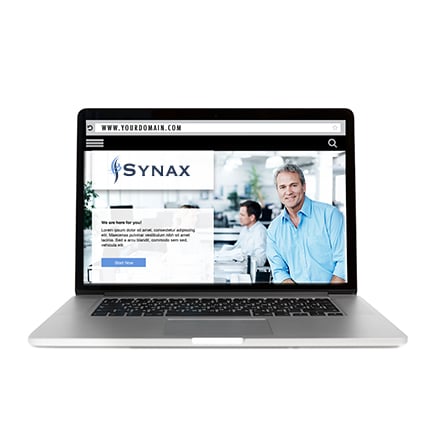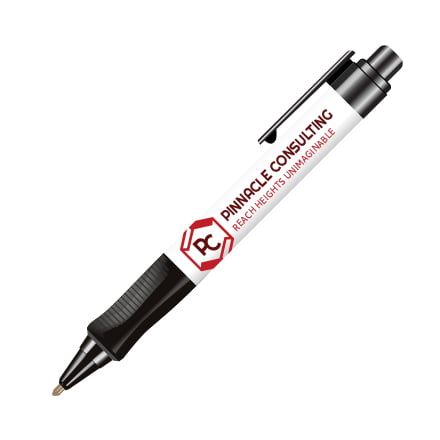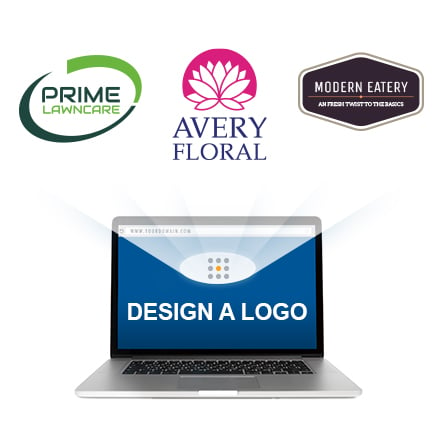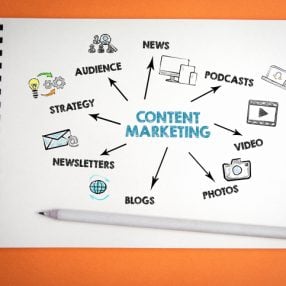Running out of reasons not to build a website? Are you constantly putting it off and wondering, “What kind of website should I make?”
Planting your flag online is the best way to steer more traffic to your business. Most people go online to research businesses before they decide where to shop. Without a presence, you’re throwing away opportunities to grow your customer base.
Beginner-friendly tools are widely available to help you build a professional site. You can make the process even easier by skipping features you don’t need and keeping things simple. To make a clean, functional site, find out which format is perfect for promoting your business.
Static business website
A static site is the easiest option if you don’t sell anything online or update content often. Static sites don’t change until you upload new content to the server.
Basically, it exists to welcome customers who find you online and preview what your business has to offer. At the very least, a static business site should include:
- A homepage with a call-to-action that motivates customers to do business with you
- An About page with a compelling brand story and your credentials
- A summary of services you offer and how they benefit clients
- A business mailing address or brick-and-mortar location (if applicable)
- A few business photos and customer testimonials to boost credibility
- Contact details and social media handles
Static sites are typically low cost and require little maintenance. Since these sites don’t change, they usually load fast and are less likely to cause problems for customers.
> Create your own site today with our Do-It-Yourself Website Builder.
Business blog
Blogs are a smart way to build credibility by offering free information to potential customers. You can use them to directly connect with readers and sign up subscribers.
Many sites offer preformatted blogs with user-friendly data entry. Just add text and photos, and you’re ready to publish. A blog can be a standalone site or a subdomain of your main site.
Whether blogging is your core business or part of your marketing plan, a well-formatted site is key. Good blogs are organized by dates and tags, and they’re easily searchable when readers want to find specific topics. You can get more creative and use widgets to include polls and other interactive elements.
Portfolio website
If you’re an artist, writer, or solopreneur, a portfolio site can be a powerful resume. Portfolios are useful for tying together a diverse background to promote your skills in one place. For example, many consultants merge hobbies and talents with corporate experience to carve out new careers.
To weave a cohesive story, create a list of skills you want to showcase. Then think about the best way to demonstrate your skills quickly and efficiently. Here are a few suggestions:
- Audio/video: Provide clips of your performances, music, video productions, etc.
- Press releases: Show media coverage of events you hosted or were featured in.
- Photo gallery: Include high-quality photos of creative design projects, such as websites, art, or salon services.
- Testimonials: Provide customer-backed proof that your business gets results.
- Written Content: Promote your books and provide PDFs or links for your written articles.
- News/appearances: Let interested people know how to see your performances or stay up to date on upcoming events.
E-Commerce site
An e-commerce site is set up to display your products and accept payments. With an online store, you can reach a wide audience and rack up sales at any time of day. E-commerce platforms are a type of dynamic site. They have to constantly adapt to updates when you sell products and have changes in inventory.
To build an e-Commerce site, you can use plugins on platforms such as WordPress to quickly create a functioning store. Many sites are easy to integrate with a point-of-sale system to help you manage inventory, shipping, and customer information. If you sell online and in a physical store, your website could include features such as ship-to-store
You can also customize a store to accept a variety of payment methods, such as credit cards and PayPal. At the same time, you’re handling sensitive customer data, so e-commerce sites need top-notch encryption and tech support.
Brochure site
A brochure or catalog site may combine properties from other formats, such as e-commerce and portfolio sites. The main difference is brochure sites allow people to browse and learn about products without making purchases directly through the site.
Brochure sites are ideal for restaurants or businesses with high-end or customized product solutions. Let’s say you have a bespoke furniture business. An online catalog could show product categories and customization options or highlight your techniques.
Even with standard products, you can use a brochure site to cut costs. A catalog is much easier to maintain than an e-commerce platform. Instead of taking payments online, simply provide a phone number or order form for simpler processing.
Restaurant site with online ordering
Does your restaurant deliver? Online ordering is a great selling point and an easy way to build customer loyalty in your area. You have many options for hosting online menu orders, but here are a few:
- You can hire a designer to create a custom ordering plugin connected to your online menu.
- You can register with a third-party site, such as Yelp, Eat24Hours, or BeyondMenu, and use a plugin to connect your menu to the platform’s ordering system. Most, but not all, of these services charge a fee for hosting your orders.
- Depending on where you build and host your site, you can use a third-party plugin, such as Zuppler. Just upload menu items and photos to customize your ordering system.
However you prefer to create an active menu, choose options that let you offer mobile ordering. Many customers like to grab food on the go, and they value the convenience of ordering from a smartphone.
Q&A or forum site
Q&A sites are informational platforms where you can answer questions or provide support. Depending on your needs, you might have a team answering questions or allow the community to help each other.
Similarly, a forum site encourages people to share comments and media about themed topics. Again, WordPress is a good place to find plugins to build a Q&A or forum framework with little experience.
Question-and-answer sites and community-building sites are highly dynamic, which makes them harder to maintain alone. To keep them running smoothly, you need a webmaster who can troubleshoot problems in a timely manner. On a positive note, these sites are invaluable for reaching your audience and keeping them invested in your business.
Forums eventually grow large file directories, and the bulky content archives can start to slow down your site. If you plan to use this format, consider paying for dedicated servers for better speed and performance.
Working with templates
Consider using an industry-specific template to make your job much easier. Niche templates have common features for your business type, whether you need to book appointments or create a gallery. That way, you can spend less time hunting for compatible plugins.
No matter what format you choose, use your site to highlight what’s special about your business. People want a glimpse of who you are, and they should leave your site with enough information to take action.
Ready to get started? Take a look at our custom website packages and find the best solution for your business needs.










